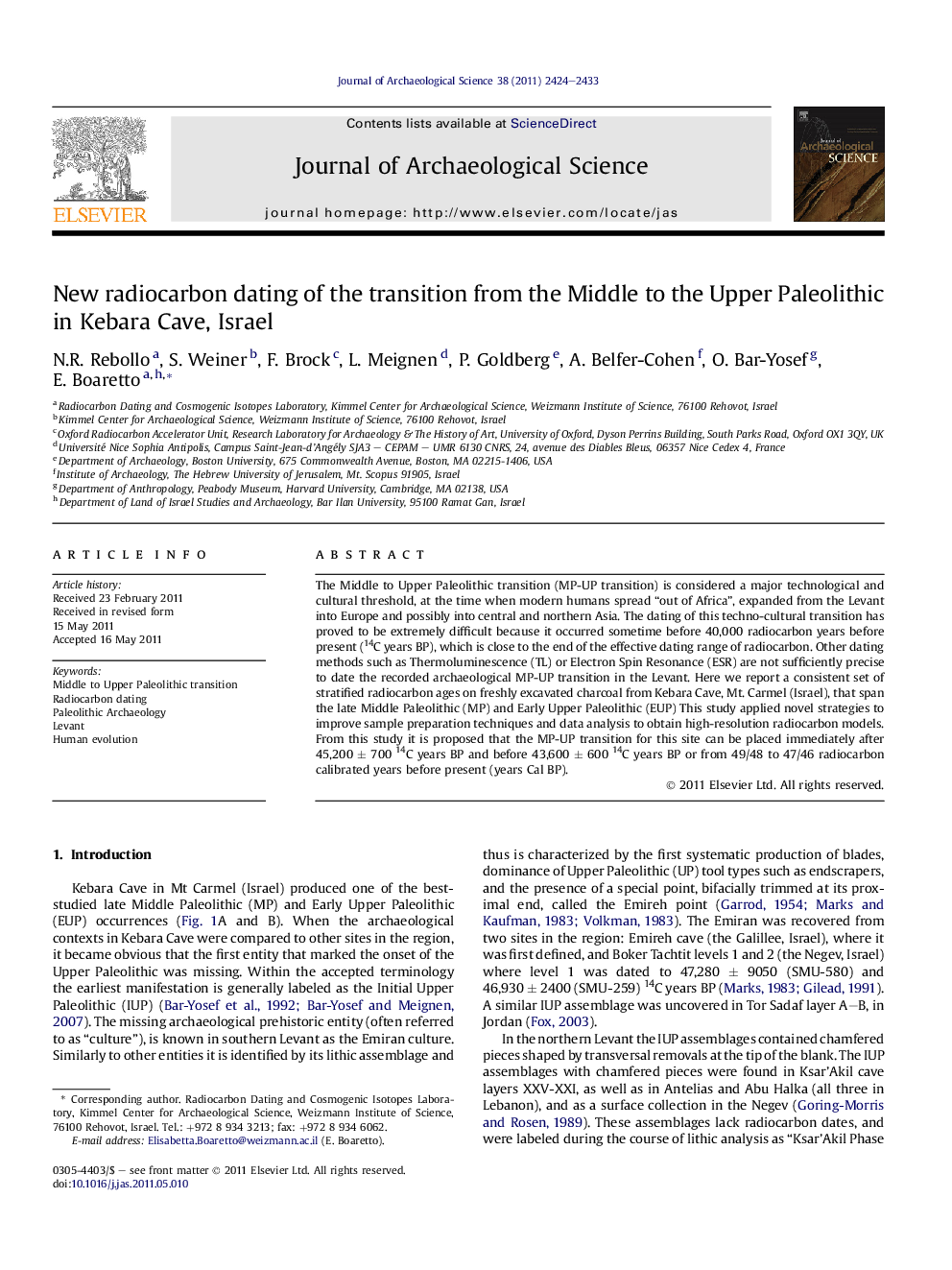| Article ID | Journal | Published Year | Pages | File Type |
|---|---|---|---|---|
| 1036344 | Journal of Archaeological Science | 2011 | 10 Pages |
The Middle to Upper Paleolithic transition (MP-UP transition) is considered a major technological and cultural threshold, at the time when modern humans spread “out of Africa”, expanded from the Levant into Europe and possibly into central and northern Asia. The dating of this techno-cultural transition has proved to be extremely difficult because it occurred sometime before 40,000 radiocarbon years before present (14C years BP), which is close to the end of the effective dating range of radiocarbon. Other dating methods such as Thermoluminescence (TL) or Electron Spin Resonance (ESR) are not sufficiently precise to date the recorded archaeological MP-UP transition in the Levant. Here we report a consistent set of stratified radiocarbon ages on freshly excavated charcoal from Kebara Cave, Mt. Carmel (Israel), that span the late Middle Paleolithic (MP) and Early Upper Paleolithic (EUP) This study applied novel strategies to improve sample preparation techniques and data analysis to obtain high-resolution radiocarbon models. From this study it is proposed that the MP-UP transition for this site can be placed immediately after 45,200 ± 700 14C years BP and before 43,600 ± 600 14C years BP or from 49/48 to 47/46 radiocarbon calibrated years before present (years Cal BP).
► Kebara Cave has remains from the Middle to Upper Paleolithic (MP-UP) transition. ► MP-UP transition is the last migration of Modern Humans from Africa into Eurasia. ► This new set of dates makes Kebara Cave the earliest evidence of MP-UP transition. ► Interdisciplinary and new field excavation methods secure the contexts in Kebara. ► Higher dating precision achieved through new laboratory and selection methods.
